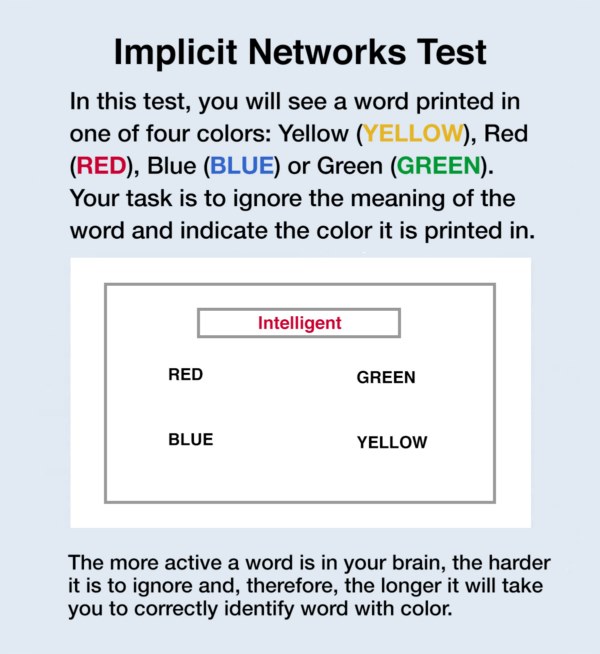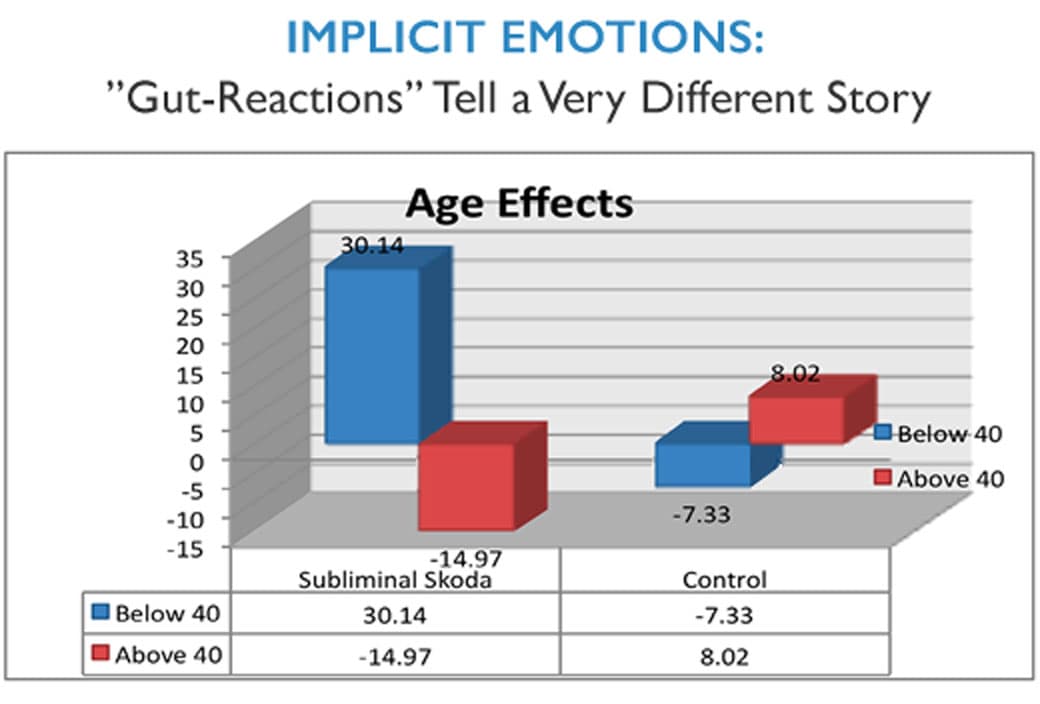
Words, ideas, or phrases that are personally meaningful and/or that have recently been primed (for example, by a message, an ad, a trailer, etc.) slow down performance on other, competing, tasks. The longer the delay, the more active the word, phrase, or idea is in the mind and brain.
The INT works by presenting a stimulus (ad, brand name, trailer or any kind of communication), after which words or phrases related to that stimulus are presented in different colors. The task is to ignore the content of the word and indicate its color as quickly as possible. If the word or phrase represents an association that was primed by the communication/message (for example: TASTES GREAT for a new drink), it is harder to ignore that word/phrase and name the color – the word/phrase is "active" in your mind. But if the word or phrase was not primed by the communication (e.g., BED), it is easier to ignore it and name the color – the word is not active in your mind. By integrating the active associations into a narrative, we can tell you the unconscious story triggered by your communication.
In this test, we present a stimulus (logo, brand, symbol, person) slowly enough for the brain to process emotionally but too quickly to be perceived consciously. We follow this initial stimulus with another stimulus people can clearly see that we know is neutral (like a generic product, or person, or standardized stimulus), then ask the respondents evaluative questions about it. Respondents think they are reacting to the second stimulus, but they are actually responding to the first, unconsciously perceived, one. This test tells us about gut-level emotional reactions people may not realize they have. It tells us what their automatic, reflexive, good/bad response is to the stimulus we are interested in.


This combination of tests pierce the veil of consciousness, is unique to Implicit Strategies, and yields important information that cannot be obtained in any other way. Alone or in combination with conscious measures, a company or campaign can learn a great deal about the consumer, moviegoer, or voter. In statistical terms, Implicit Strategies adds to the variation of consumer behavior explained over and above what you can learn by just asking. Effective, efficient assessment of attitude that shapes behavior outside of awareness – that is what we do.
For more information or to book a session, contact us
at [email protected]
© 2021 Implicit Strategies, LLC. All Rights Reserved.